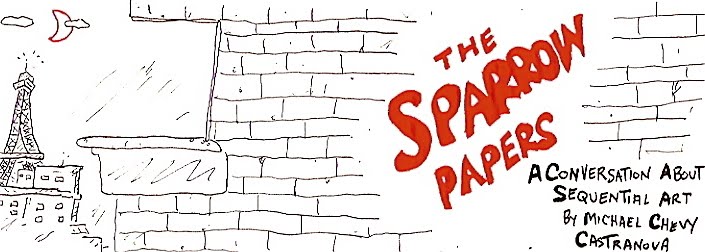 I’m just not sure what to make of Eric Powell’s The Goon. The books at one point can make me laugh out loud, and at another I think, well, that just ain’t right ….
I’m just not sure what to make of Eric Powell’s The Goon. The books at one point can make me laugh out loud, and at another I think, well, that just ain’t right ….My Murderous Childhood (And Other Grievous Yarns) has more than its share of hilarity. “Goon, some weird guy with a big robot wants a word with you outside,” one character informs the protagonist. “Aw, fer Christ! If it ain’t one thing it’s another,” the Goon replies, as if this is an almost-everyday occurrence.
True, the Goon and his pals don’t live in Munchkin Land. Their violent, grim town is filled with zombies, mad scientists, carnival lowlifes, mobsters and giant derby-wearing spiders who’ve skipped out on their alimony payments.
Mayhem often builds to absurdity, and there are many references to “migrating orangutans that mysteriously burst into flames.” And isn’t that Bob Dylan as the King Hobo?
Powell’s visceral art surely reveres the old Vault of Horror/Tales From the Crypt comics, except with more punch.
And I guess that may be Powell’s point. This is a 1940s-era boy’s idea of a tough guy’s adventure book — where disagreements are settled with a clomp on the head with a grave-digger’s shovel, and humor is found in poisoning rival pie-eating contestants and a “moron” smearing his feces on a living room wall ….
After all, it’s the Goon himself who proclaims, “There ain’t nothin’ more self rewardin’ than tauntin’ the mentally handicapped!”
I’d suggest you could take what you like and leave the rest, but suspect the Goon wouldn’t approve of such “sissy” sentiment.




